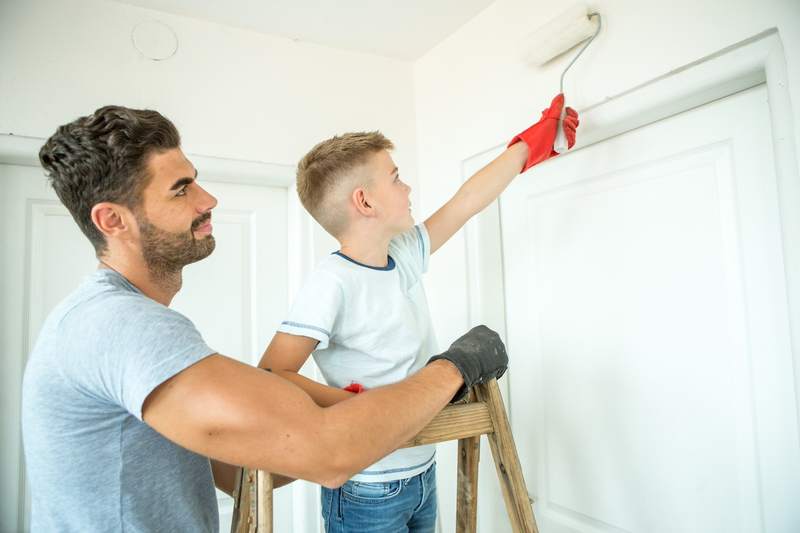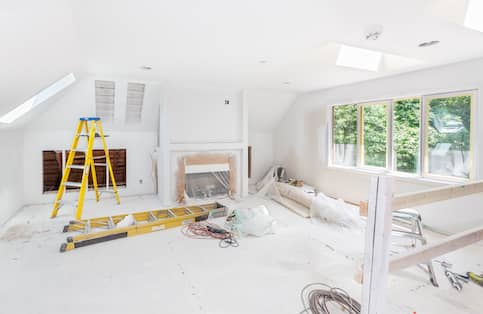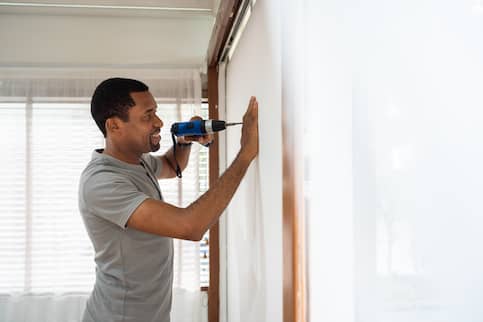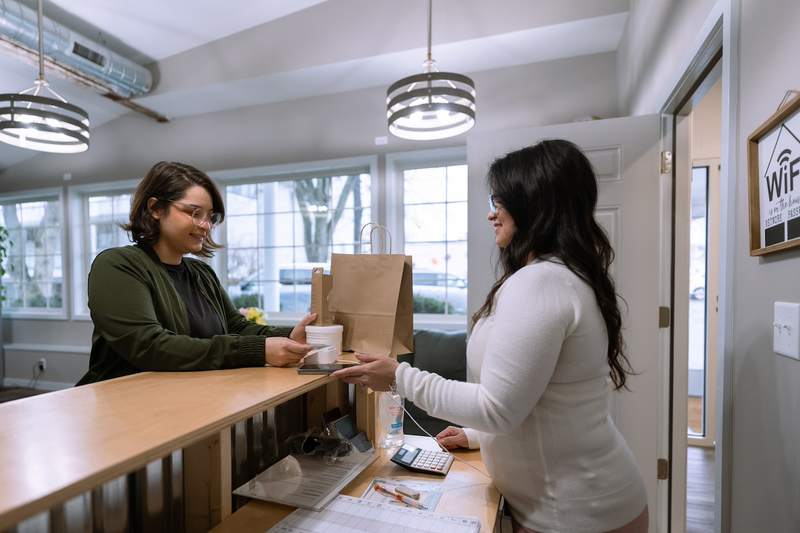When your plans for upgrading your pad outgrow what you can afford to pay out of pocket, it’s time to consider a home improvement loan. Each works differently, so homeowners considering a home improvement loan can choose the type that best fits their finances and goals.
What Are Home Improvement Loans?
Home improvement loans are designed to help homeowners pay for major or minor upgrades, whether that’s painting the exterior, building an addition or replacing the roof. Home improvement loans can be secured or unsecured. Secured loans require the borrower to put up collateral, while unsecured loans do not.
Home Renovation Loans Vs. Home Equity Financing
Home equity is the difference between what your home is worth and what you owe on it, and homeowners can borrow their equity to pay for home improvements.
The most common types are home equity loans and home equity lines of credit. Because your home secures these loans, they typically have lower interest rates. The tradeoff is you could lose your home if you default.
A home renovation loan is a personal loan you take out to pay for home improvements. Personal loans tend to come with higher interest rates, but since the loan is unsecured, you’re not putting your personal property at risk.
What’s Your Goal?
Buy A Home
Discover mortgage options that fit your unique financial needs.

Refinance
Refinance your mortgage to have more money for what matters.
Tap Into Equity
Use your home’s equity and unlock cash to achieve your goals.
How Do Home Improvement Loans Work?
Some financing options are intended only for home improvements, while others can be used for any purpose, including home improvements.
Borrowers need to decide between an installment loan, where you receive a lump sum of money and repay it in installments, or a line of credit you can access as needed.
Installment loans typically have a fixed interest rate, so your monthly payment will not change. Once you’ve repaid an installment loan, your account with that lender is closed. A cash-out refinance and a personal loan are two examples of installment loans.
A line of credit lets you borrow cash as needed. Lines of credit usually come with a variable interest rate, and you only have to repay what you borrow.
Installment loans are best for homeowners who know how much they need to spend. For example, if you’re getting the outside of your home repainted and were given a quote for $10,000, an installment loan would be a good option.
A line of credit is better for borrowers who don’t know their financing needs. For example, revolving credit may be a better choice if you’re planning multiple home improvement projects with fluctuating costs.
Ready To Refinance?
Get matched with a lender that can help you reach your financial goals.
6 Home Improvement Financing Options
If you’re planning a home improvement project and considering your financing needs, here are six options.
1. Cash-Out Refinance
A cash-out refinance involves taking out a new mortgage based on your home’s fair market value, paying off your current mortgage with the proceeds and keeping the difference in cash. The funds can be used for any purpose, including home improvements, and are repaid as part of your new mortgage. You’ll need at least 20% equity in your home to qualify for a cash-out refinance, and the rates and terms you receive will depend on your credit score and debt-to-income ratio.
2. Home Equity Loan
A home equity loan is often referred to as a second mortgage, and it can also be used for home renovations. This loan allows you to borrow your home equity as a lump sum and repay what you borrow in monthly installments. Home equity loans come with fixed rates and loan terms ranging from five to 30 years. Unlike a cash-out refinance, you keep your current mortgage.
Some lenders will let you borrow up to 90% of your home’s equity, though this depends on your credit score and financial situation. The interest rates will be lower than you’d get with a personal loan, but you’ll also have two monthly mortgage payments. You can deduct the mortgage interest on a second mortgage if the funds go toward home improvements.
3. Home Equity Line Of Credit
A home equity line of credit is another way to borrow your equity without refinancing your primary mortgage. With a HELOC, your borrowed equity becomes the basis for a line of credit you can draw on as often and for as much as you need. HELOCs typically have a draw period of about 10 years when you can borrow against the credit line and pay interest on what you borrow. Once the draw period ends, you can no longer draw on the borrowed funds and you start repaying the principal and interest. The repayment period is much longer and usually lasts up to 20 years.
A HELOC is best for anyone who isn’t sure how much a home improvement project will cost or if you’re planning multiple projects.
4. FHA 203(k) Loan
The Federal Housing Administration offers FHA 203(k) rehab loans to help low- and moderate-income borrowers buy homes requiring repairs.
There are two types: the limited 203(k) and the standard 203(k). A limited 203(k) is best for homes needing minimal repairs, and the home must be habitable during renovation. Limited 203(k) loans are capped at $35,000.
A standard 203(k) is for homes that need significant structural or systemic repairs, such as plumbing upgrades, replacing the heating and cooling systems or renovating the kitchen. The minimum loan amount is $5,000, and there is no maximum loan amount. However, the property’s value must meet FHA loan limits for that area.
5. Fannie Mae HomeStyle Renovation Loan
A Fannie Mae HomeStyle loan lets you buy or refinance a home and pay for renovations and closing costs with one loan. The interest rates you’ll receive are typically lower than what you’d get on a HELOC, personal loan or credit card.
6. Personal Loan
A personal loan is an unsecured loan from a bank or online lender that you can use for a variety of purposes, including home improvements. These loans come with fixed interest rates, though the rate you receive will depend on your creditworthiness. Most personal loans come with repayment terms between three and seven years.
Personal loans are best for small home improvement projects where you can repay the loan quickly. It’s not the best choice for borrowers who need to borrow large sums due to the relatively short repayment terms.
View Your Refinancing Options
Find a refinance lender that will work with your unique financial situation.
Pros And Cons Of Home Renovation Loans
It’s important to weigh the pros and cons of a home improvement loan.
Pros
Here are the benefits of taking out a home improvement loan:
- Increase your home’s value. Home improvements can increase the value of your home, which can be an asset if you plan to sell in the future.
- Convenience. When you take out a home improvement loan, you streamline the financing process. You’ll repay one lender each month instead of juggling multiple lenders and payments.
- Possible tax benefits. If you take out a home equity loan or HELOC, you may be able to deduct the mortgage interest from your taxes. This can save you money come tax season.
Cons
Here are a few potential drawbacks to consider before taking out a home renovation loan:
- You’re taking on more debt. A home improvement loan will add to your total debt, so if you aren’t careful, you can find yourself over-extended financially.
- Putting your home at risk. If you take out a secured loan, like a HELOC or home equity loan, you’re at risk of losing your home if you’re unable to repay the loan.
- Higher interest rates. Unsecured loans, like personal loans and credit cards, come with higher interest rates, increasing the amount you have to pay over the life of the loan.
How Do You Compare Home Improvement Loans?
Here are the main factors to consider when comparing your home improvement financing options:
- Annual percentage rate. Your APR is expressed as a percentage, and it calculates the total amount you’ll pay, including interest and fees. A higher APR means you’ll end up paying more over the life of the loan.
- Total loan amount. The total loan amount is the principal you borrow to finance your home improvements. A higher loan amount means more debt, and it’ll take longer to repay.
- Length of the loan term. The loan term is how long your lender gives you to repay the home improvement loan. Longer loan terms will result in lower monthly payments, but you’ll pay more overall.
- Monthly payment amount. The monthly payment amount is how much you have to pay on your loan each month. You want to ensure that the monthly payment amount fits within your budget.
- Additional fees. You want to consider any additional fees the lender charges, like closing costs, origination fees or prepayment penalties.
How To Get A Home Improvement Loan
Here is the step-by-step process to apply for a home renovation loan.
1. Check Your Credit Score
Your credit score largely determines the interest rates and loan terms you’ll receive on your home improvement loan. Before applying, it’s a good idea to check your credit score. You can do this for free by visiting AnnualCreditReport.com.
2. Review Your Home Equity
Borrowers with more home equity have more options for home improvement financing. You can determine how much equity you have in your home by comparing the appraised value to how much you currently owe on your mortgage. A home equity loan or HELOC may make sense if your equity is at least 20% or higher.
3. Compare Your Financing Options
Once you know the type of loan you want to apply for, receive quotes from at least three different lenders. Comparing your financing options will help you find the best rates and terms on the loan. During this stage, lenders do a soft inquiry on your credit so it won’t hurt your credit score.
Home Improvement Loan Types Compared
| Financing Option | Best For … | You May Qualify If … |
|---|---|---|
| Cash-out refinance | Borrowers with substantial equity in their home who need to borrow a large sum of money. | You have at least 20% equity, a good credit score and a low DTI ratio. |
| Home equity loan | Borrowers with substantial equity in their home who want predictable monthly payments. | You have at least 20% equity, a good credit score and a low DTI ratio. |
| HELOC | Borrowers with substantial equity in their home who want flexible borrowing terms. | You have at least 20% equity, a good credit score and a low DTI ratio. |
| FHA 203(k) rehab loan | Low- and moderate-income borrowers who want to roll the home improvement costs into their mortgage. | You meet the minimum credit requirements, and the property value falls below the FHA’s limits. |
| Fannie Mae HomeStyle Renovation loan | Borrowers who want to finance the costs of their home and home improvements in one loan. | You have good credit, a stable income, and low DTI. |
| Personal loan | Borrowers who want an unsecured loan with predictable monthly payments. | You have good credit, a stable income, and low DTI. |
4. Submit An Application
Once you’ve picked a lender, you can submit an application. When you apply, your lender will ask for additional documentation to verify your income and employment.
5. Repay The Loan Or Line Of Credit
Once you’ve received the loan proceeds, you’ll begin repaying the home improvement loan. On a HELOC, you’re only required to pay interest for the first 10 years.
FAQ
Here are answers to common questions about home improvement financing.
The Bottom Line
A home improvement loan is a convenient and affordable way to finance a project. You can choose from many different financing types, each with different benefits and downsides. Considering your financial situation and goals will help you decide which home improvement loan is right for you.

Jamie Johnson
Jamie Johnson is a Kansas City-based freelance writer who writes about a variety of personal finance topics, including loans, building credit, and paying down debt. She currently writes for clients like the U.S. Chamber of Commerce, Business Insider and Bankrate.












